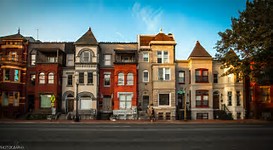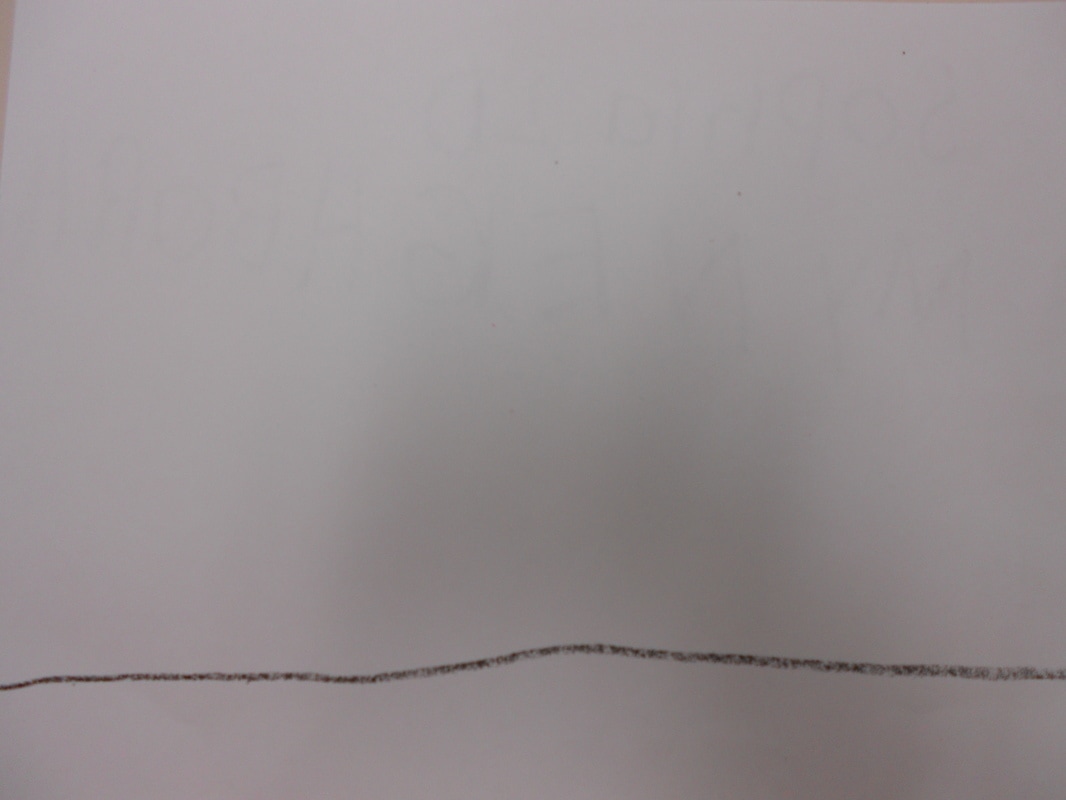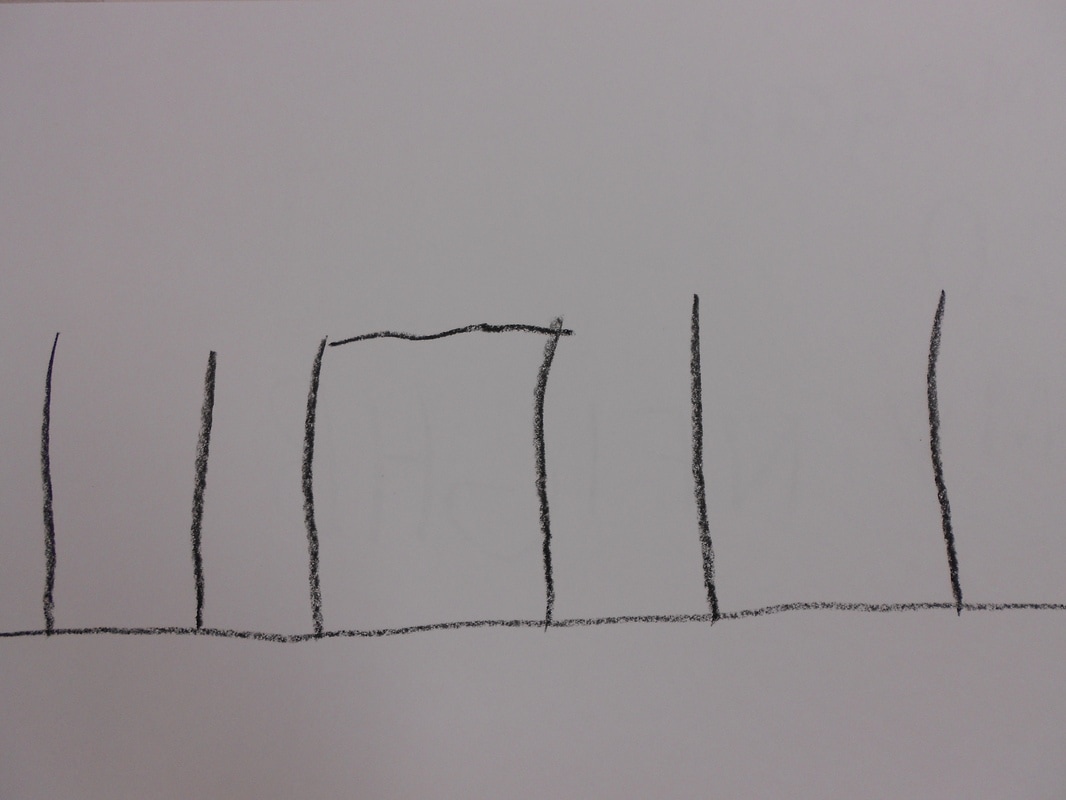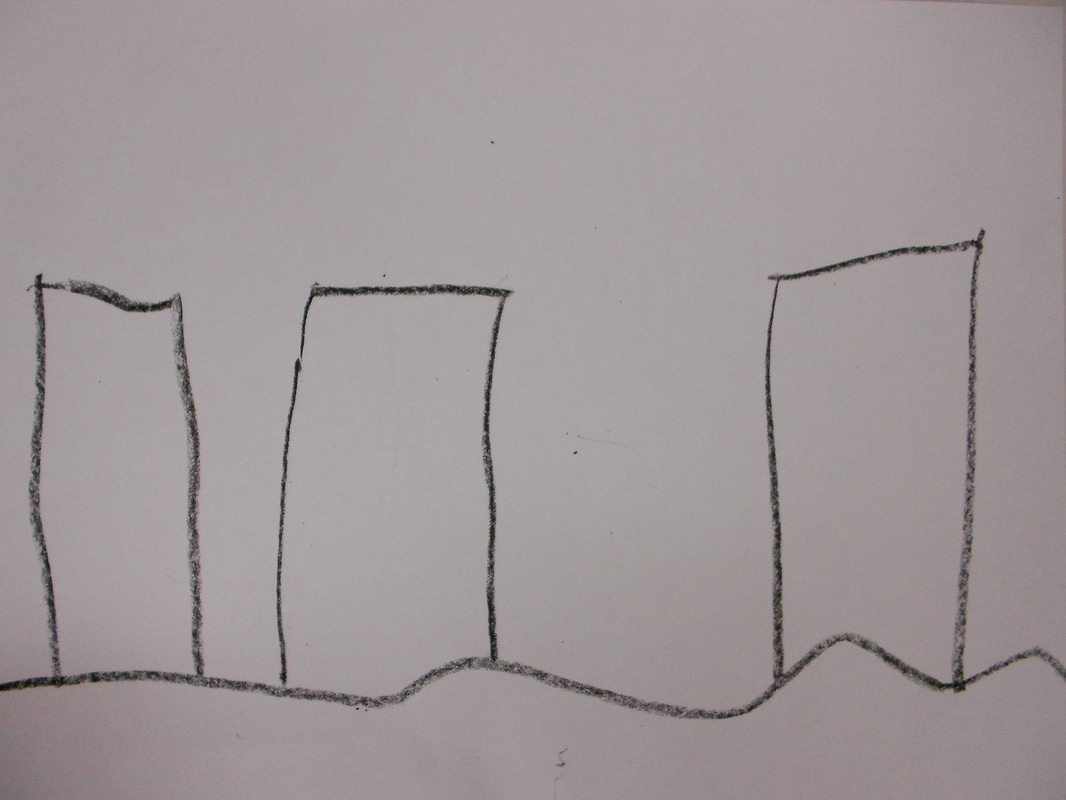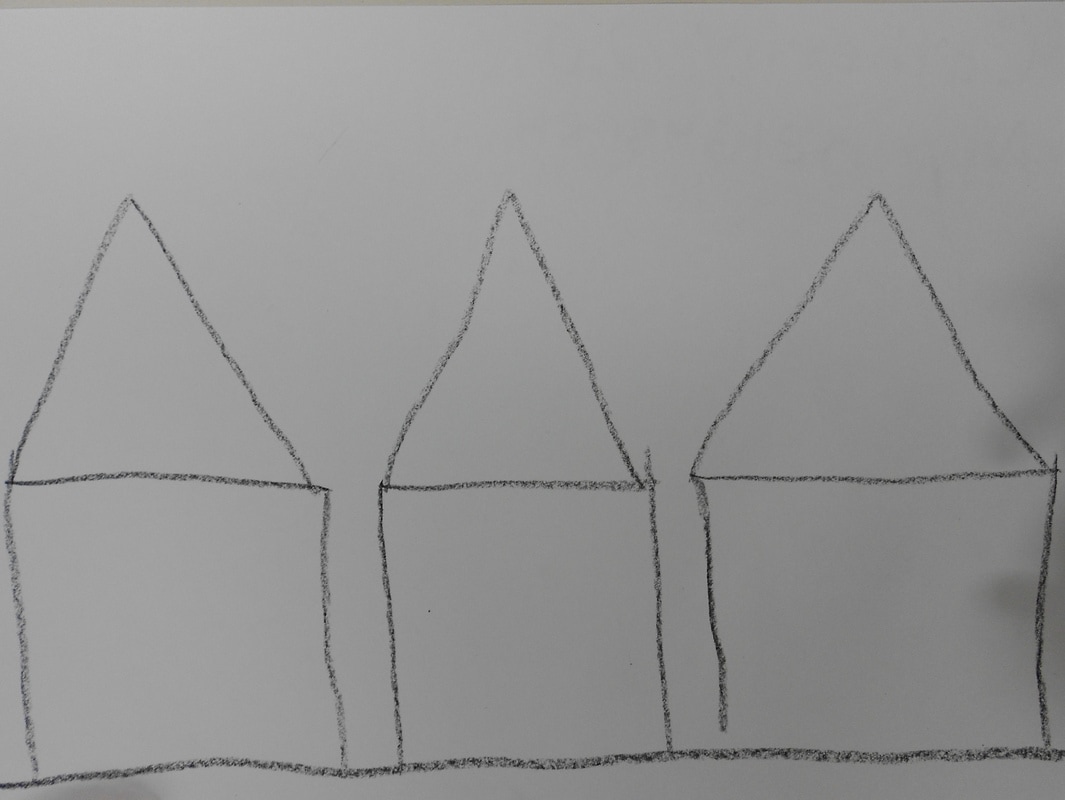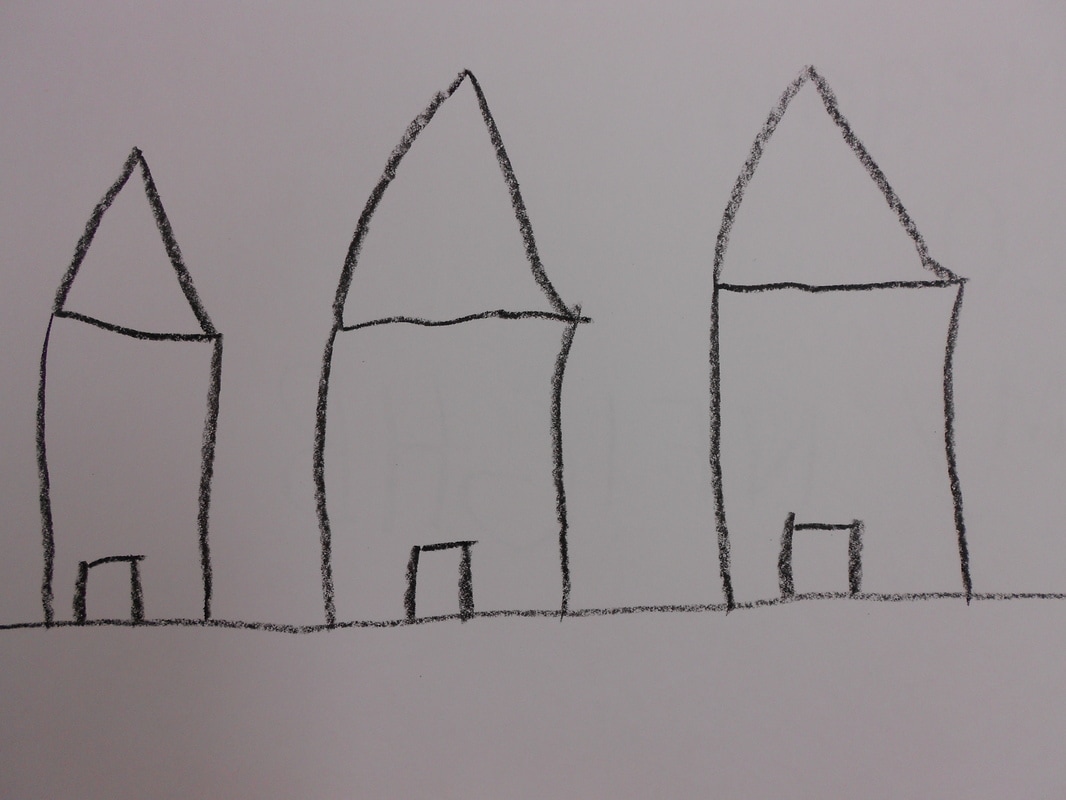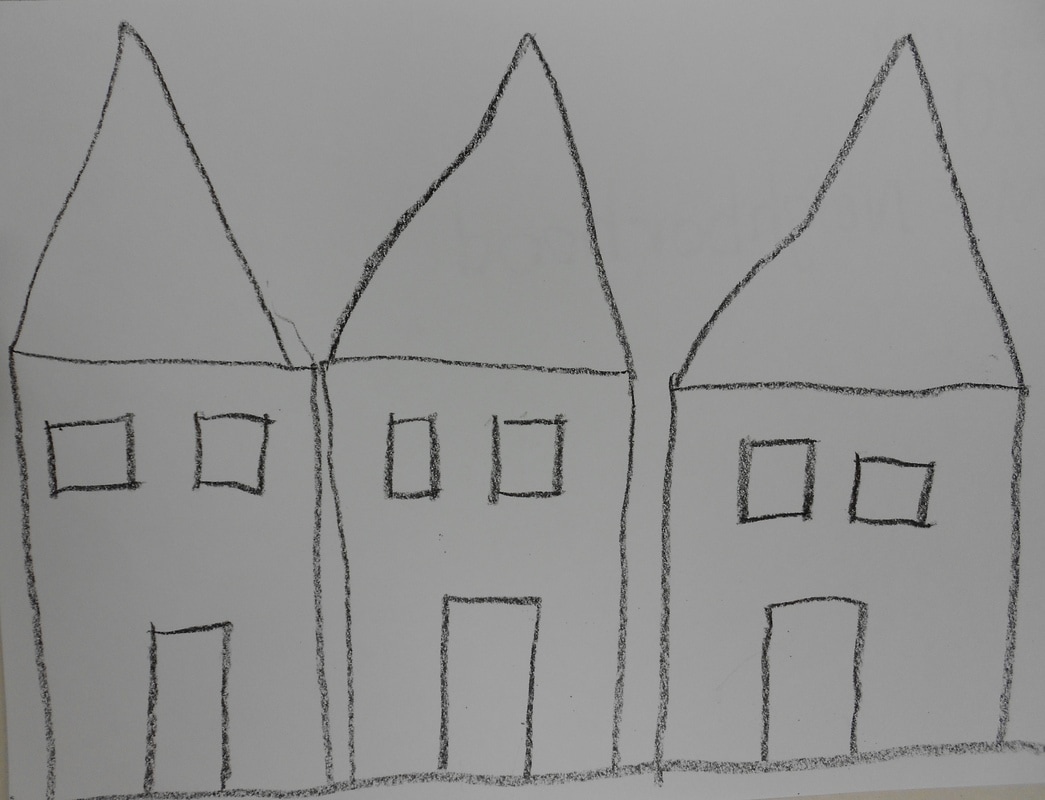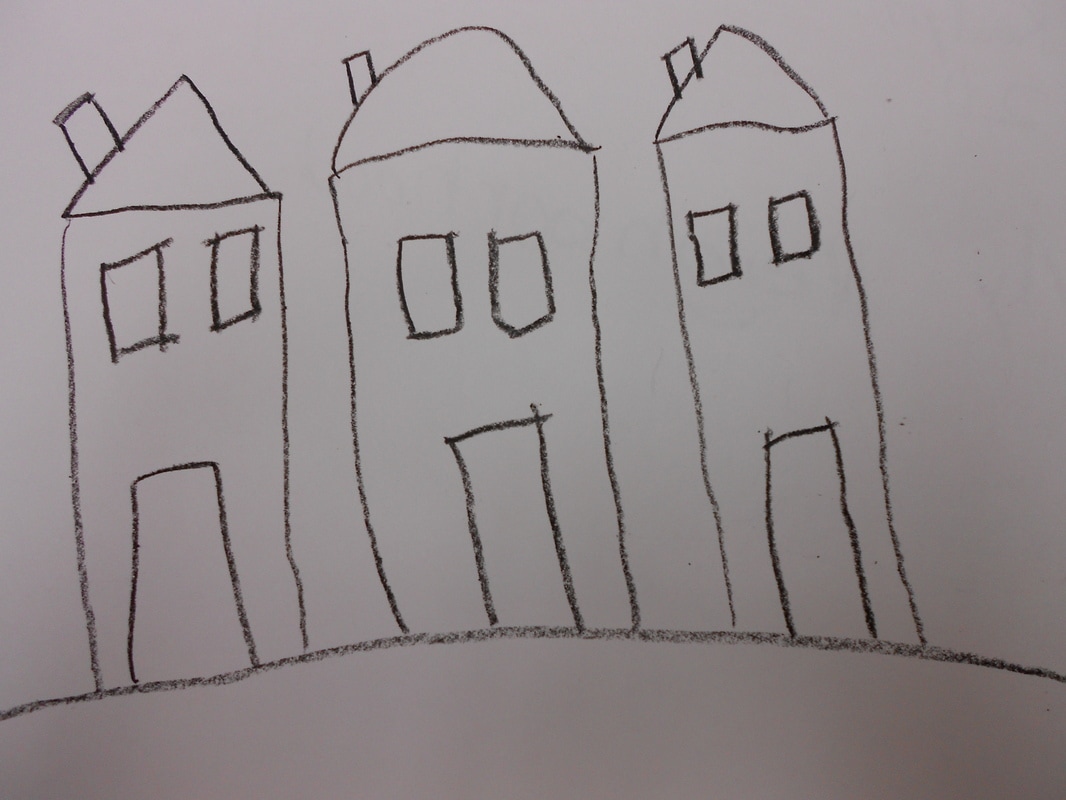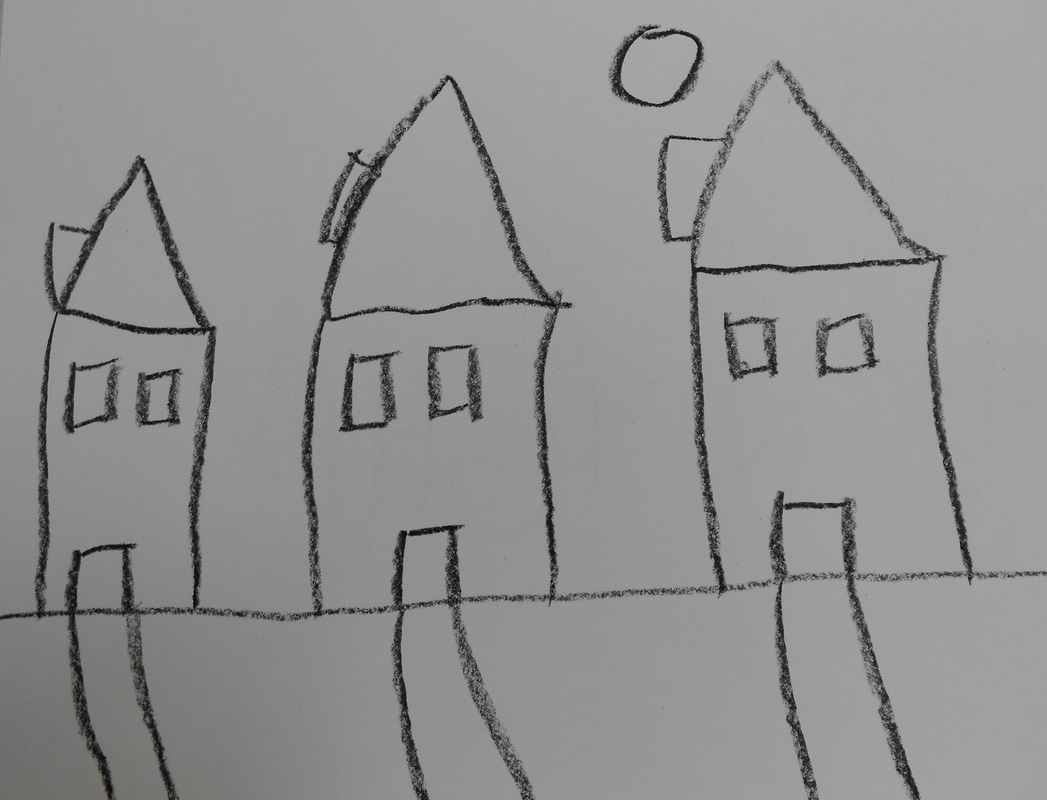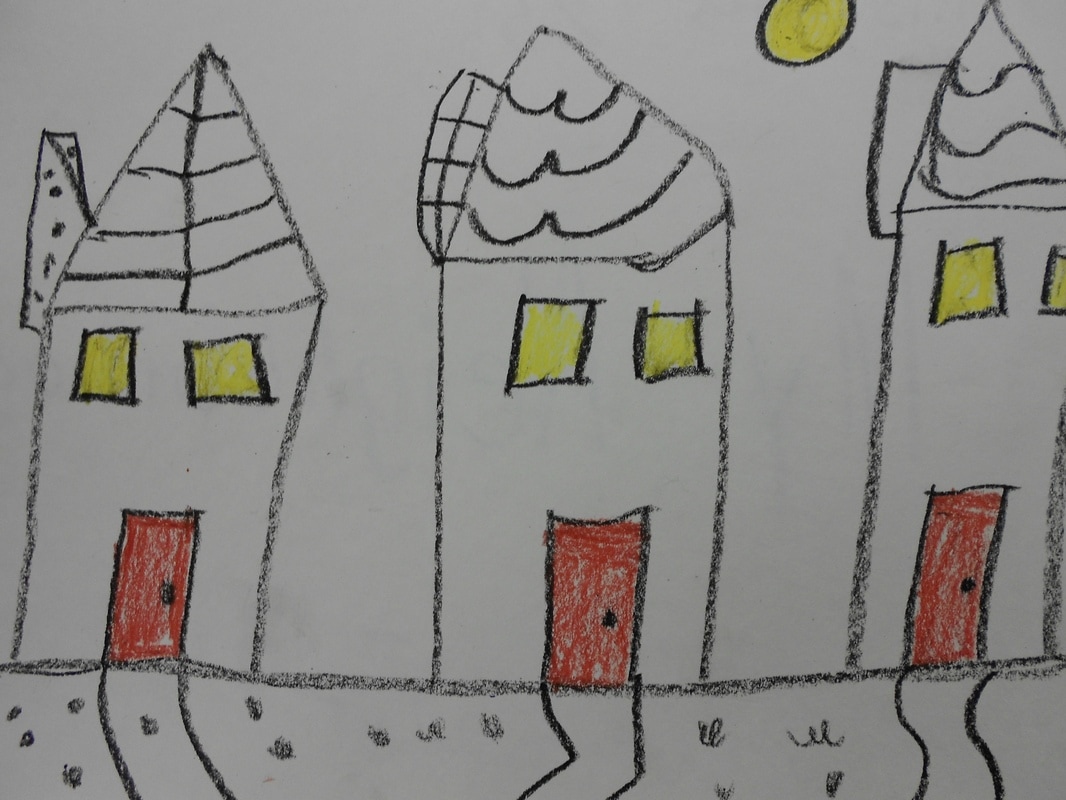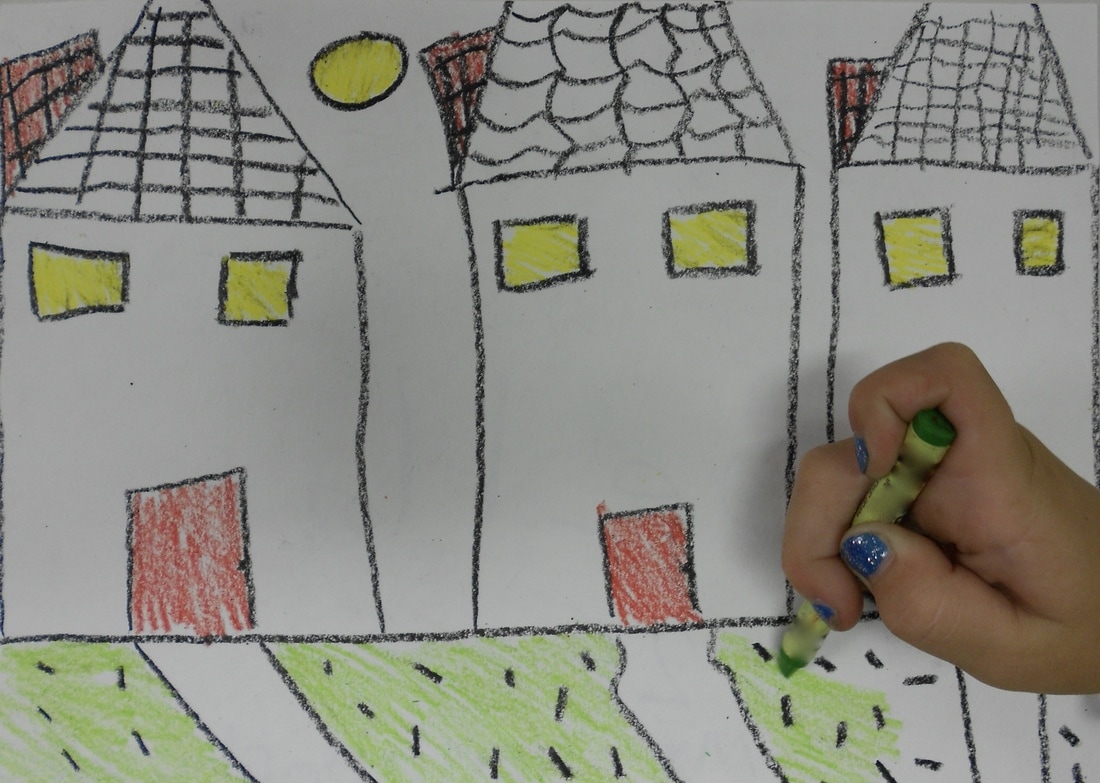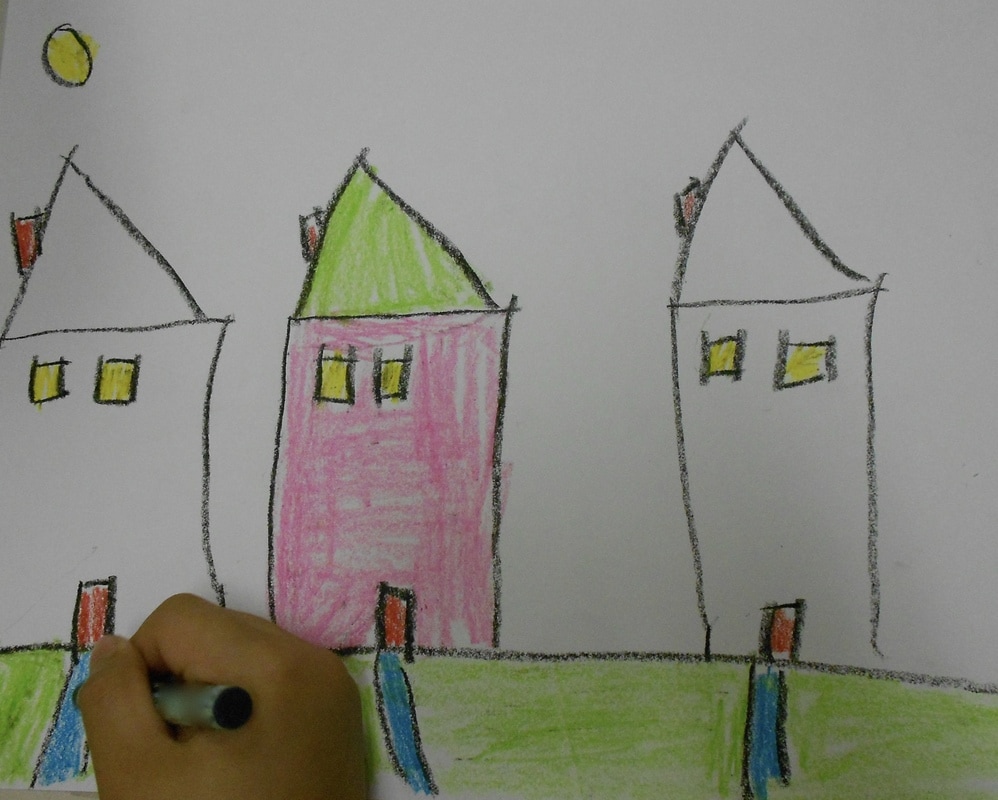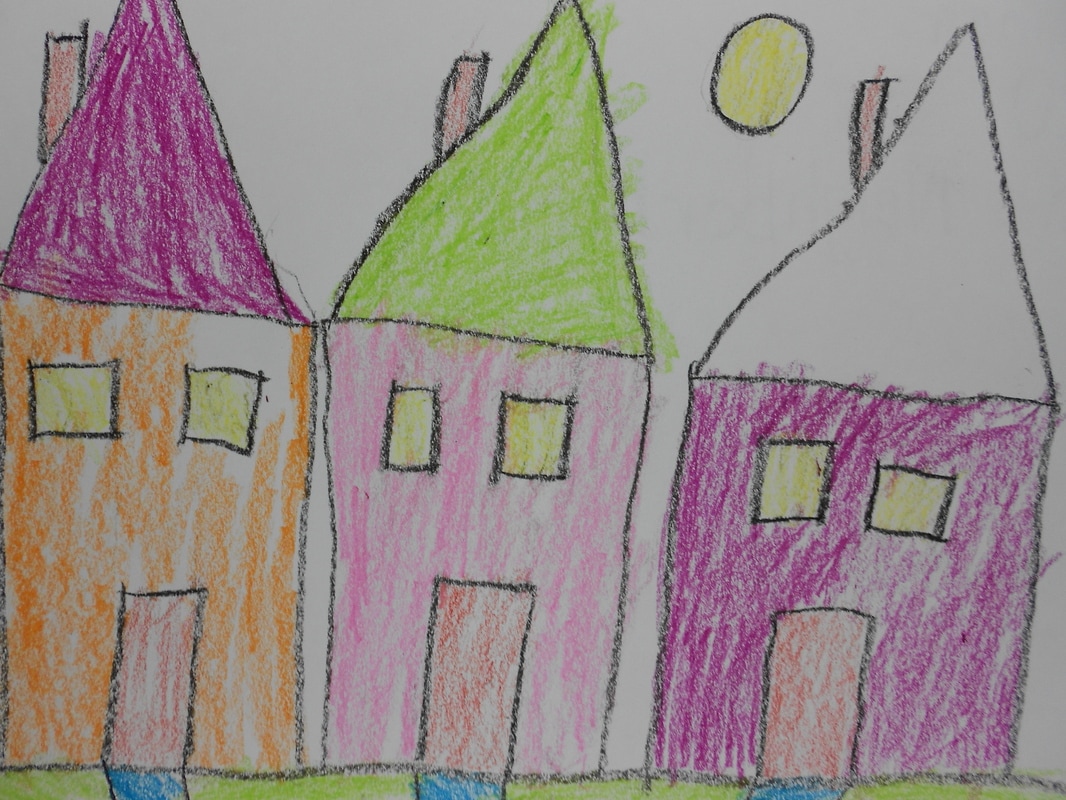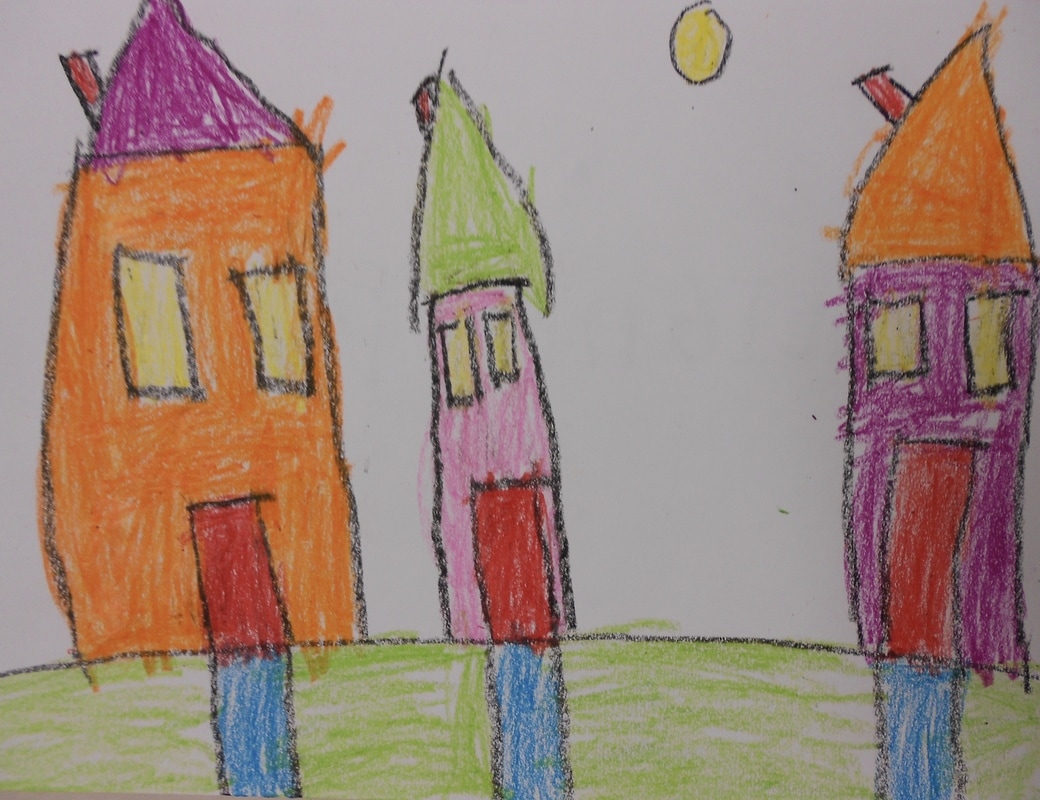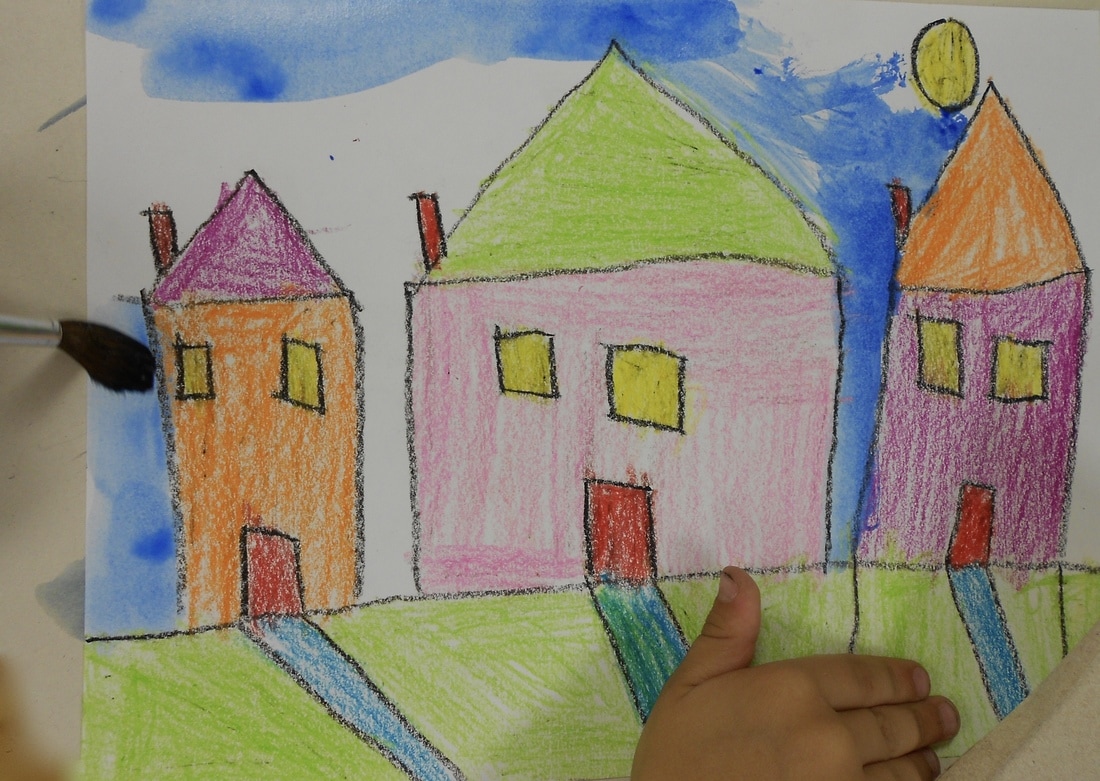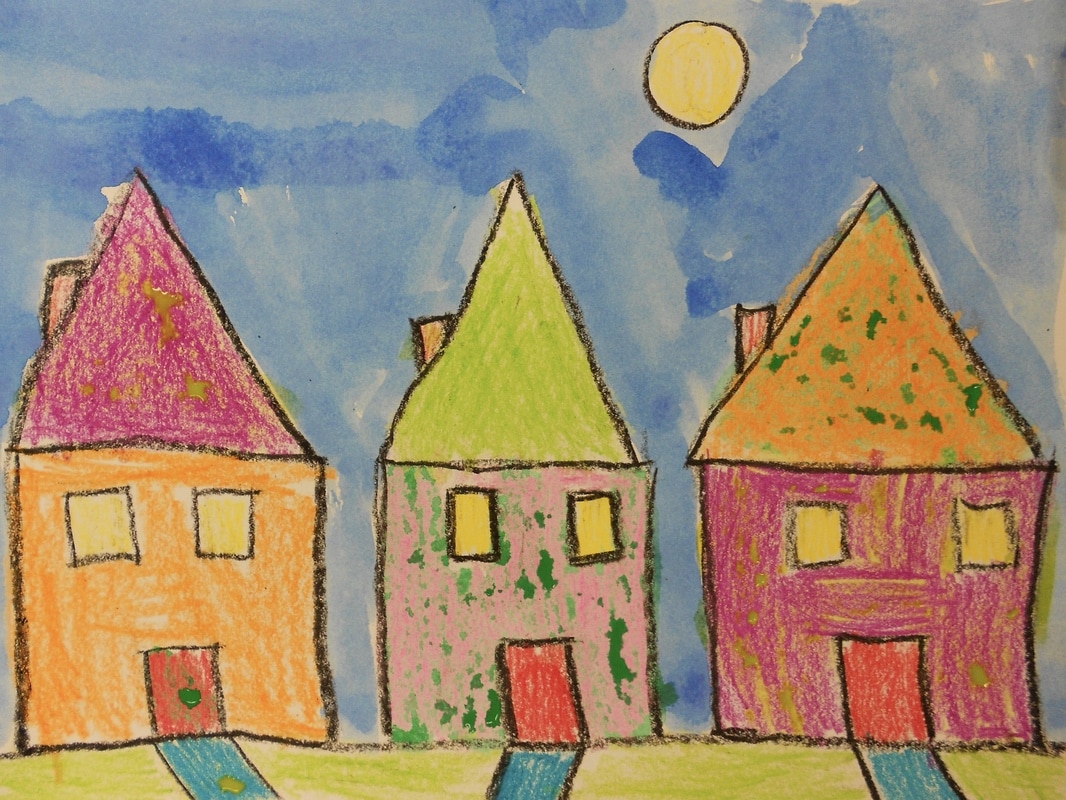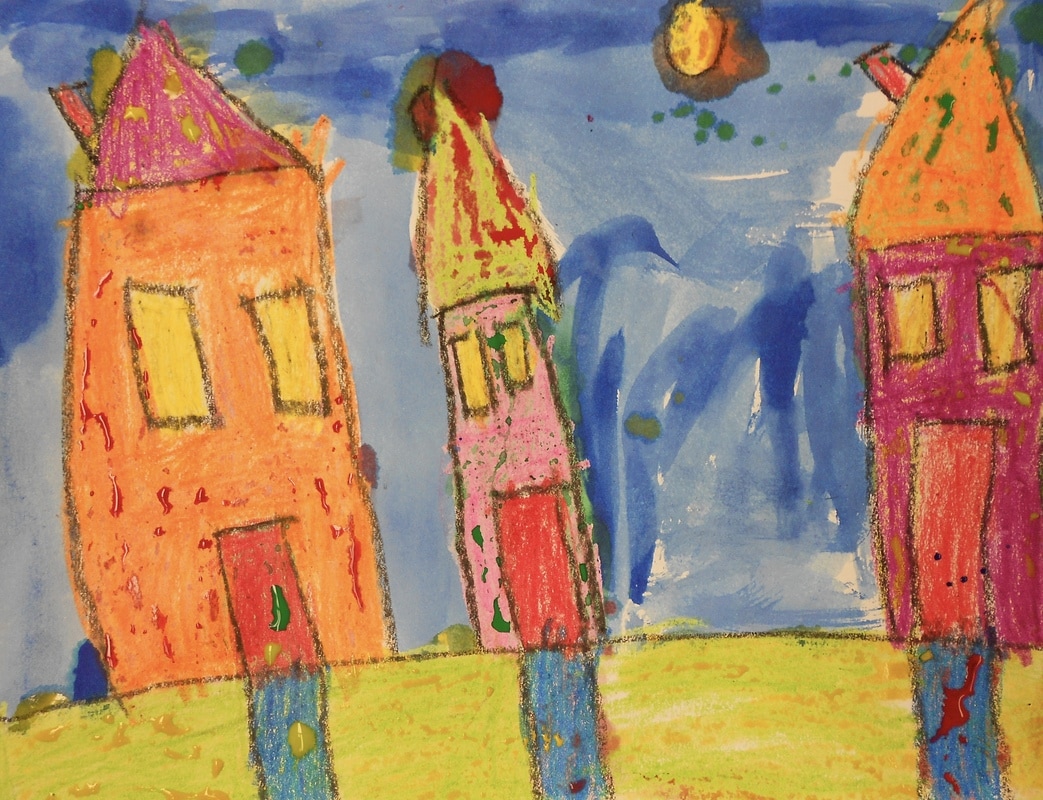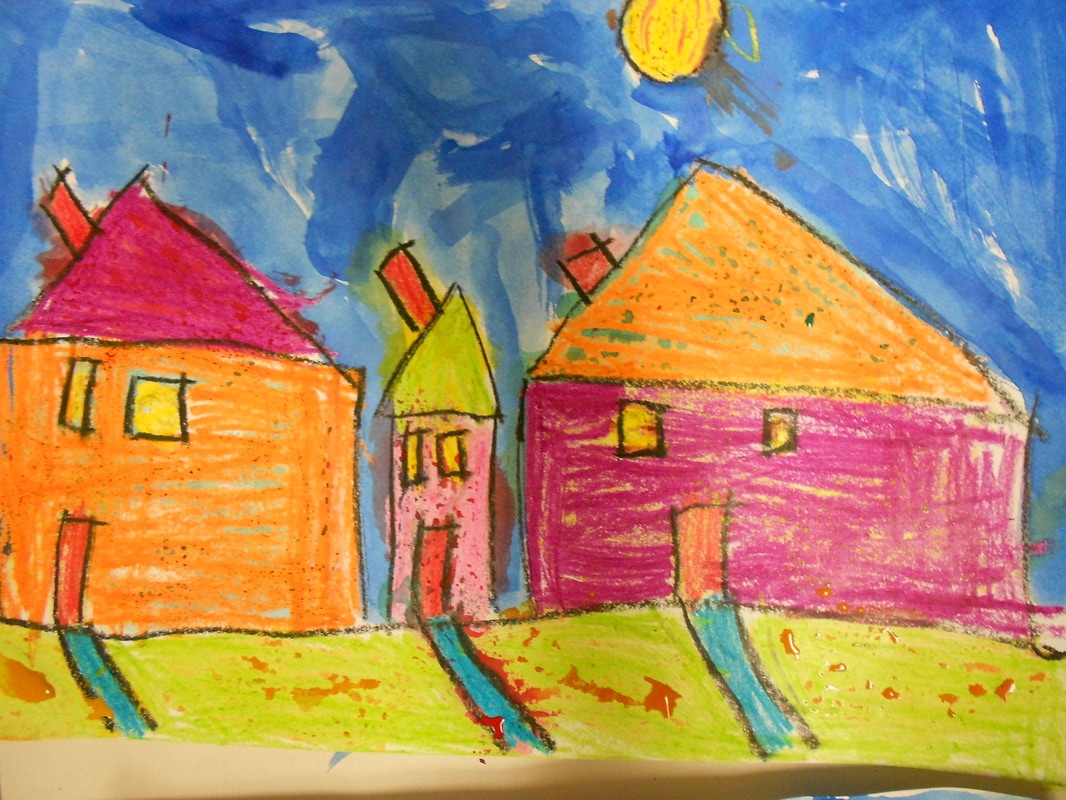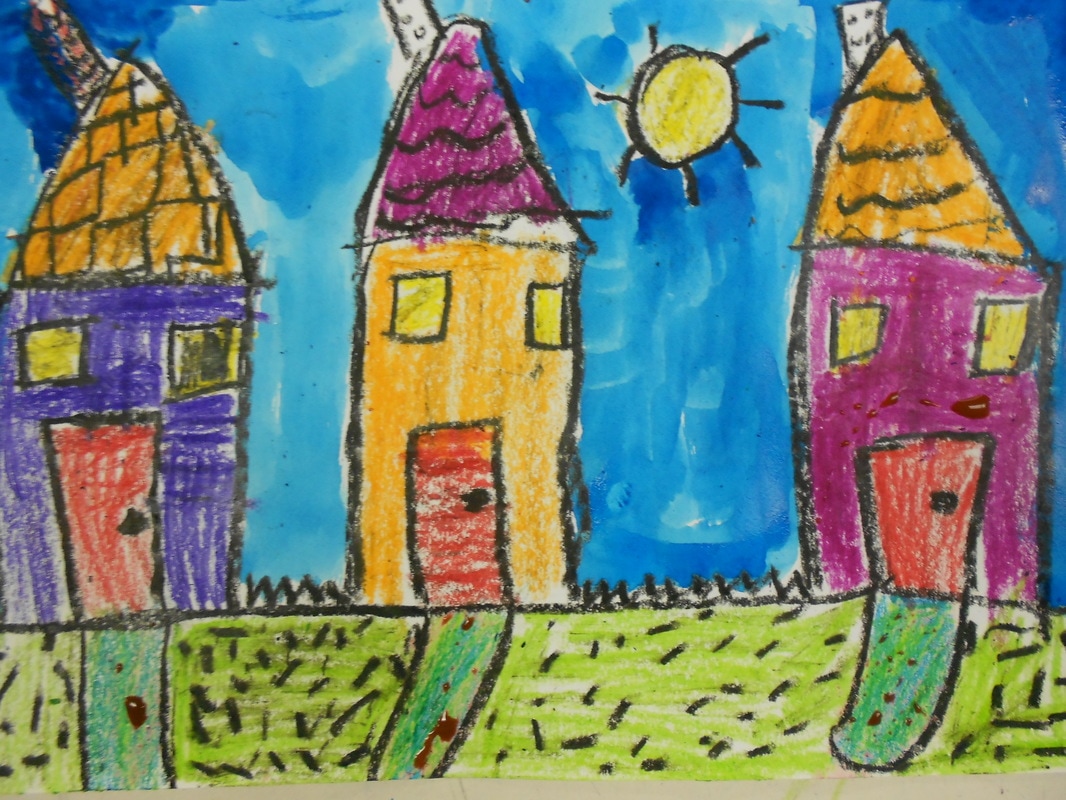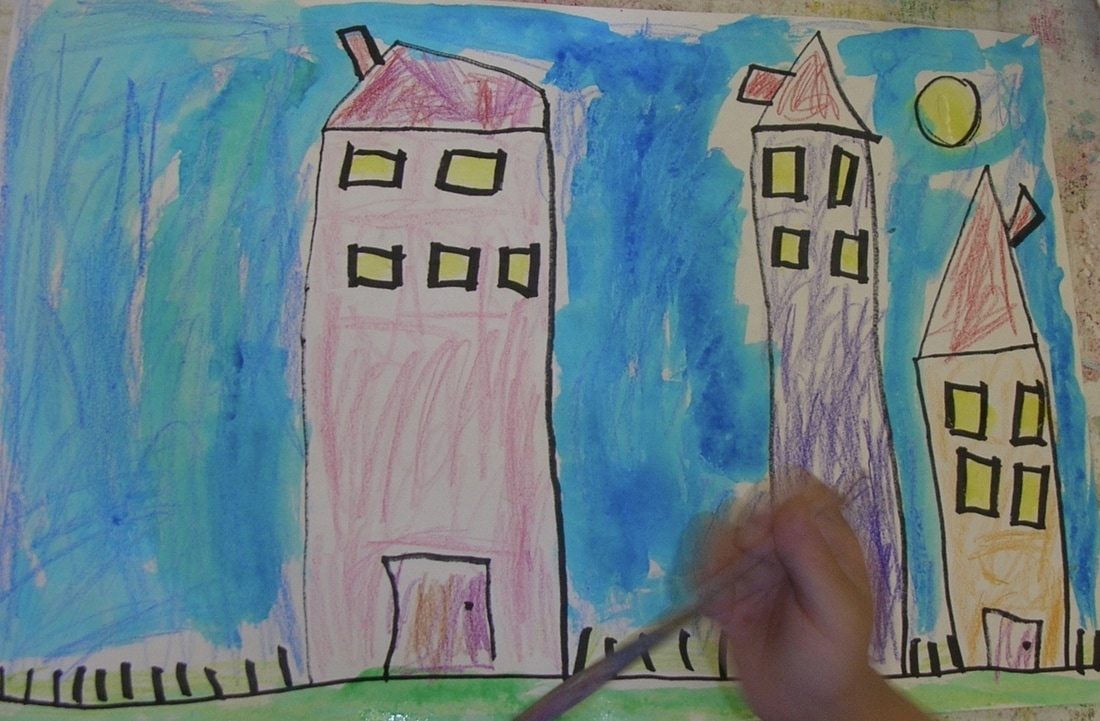directed draW HOUSES
neighborhood art lesson
The following is a 1st grade art lesson on using basic shapes, crayons + watercolor to create a work of art.
Scroll down to find:
Scroll down to find:
- examples of houses + neighborhoods
- step-by-step instructions with pictures of the project
- a lesson plan (including California State Visual Art Standards)
examples of neighborhoods
step-by-step neighborhood lesson
|
7. draw rectangles for chimneys straight up from the roof - either side of roof - see note* under activity below
|
8. draw walkway coming down from front door - they can be straight or curve towards right or left - students decide where their circle for a sun is in the sky
|
9. color chimneys red, doors red, sun yellow, inside windows yellow or blue
|
objective
Students will, successfully make an art work of a row of houses using simple, basic shapes + lines. They will gain knowledge of putting simple, basic shapes or lines, like squares, rectangles, triangles + straight lines to create a picture. They will learn about texture in a drawing, how to vary colors and use watercolors to create a mixed media piece.
materials
- 9"x12" white construction or watercolor paper
- crayons
- watercolor
- watercolor brushes (preferably a large brush)
- cups/containers for water
- paper towels
- if needed, something to protect tables
- smocks for students
activity
- explains + discus with students what a neighborhood is + what it might look like
- have students put on their art smocks/aprons
- prepare an are for artwork to dry ahead of time
- follow step-by-step instructions above
- NOTE* #7 picture/instruction - explain to students the roof sides are diagonal lines but the lines for the chimney are vertical
- always allow room for creativity on the student work
- when you can, give students choices on colors + details
vocabulary words
- color - The visual sensation dependent on the reflection or absorption of light from a given surface. The three characteristics of color are hue, value, and intensity.
- composition - The organization of elements in a work of art.
- harmony - The principle of design that combines elements in a work of art to emphasize the similarities of separate but related parts.
- line - A point moving in space. Line can vary in width, length, curvature, color, or direction.
- pattern - Anything repeated in a predictable combination.
- Shape - A two-dimensional are or plane that may be open or closed, free-form or geometric. It can be found in nature or is made by humans.
- Space - An area in which objects or images can exist.
- Still Life - Arrangement or work of art showing a collection of inanimate objects.
- texture - The surface quality of materials either actual (tactile) or implied (visual). It is one of the elements of art.
- Unity - Compositional similarity, oneness, togetherness, or cohesion. Total visual effect in a composition achieved by the careful blending of elements of art and principles of design.
- variety - A principle of art concerned with combining one or more elements of art in different ways to create interest.
variation
- use a horizontally long rectangular paper for a row of more houses
- add trees between houses
- add flowers + bushes along house base
- use another medium, such as oil pastels or chalk pastels, or paint only project with watercolors or tempera paint
ca visual art standards
1.0 ARTISTIC PERCEPTION
Develop Perceptual Skills and Visual Arts Vocabulary
1.1 Describe and replicate repeated patterns in nature, in the environment, and in works or art.
Analyze Art Elements and Principles of Design
1.3 Identify the elements of art in objects in nature, in the environment, and in works of art, emphasizing line, color, shape/form, and texture.
4.0 AESTHETIC VALUING
Making Informed Judgements
4.4 Select something they like about their work of art and something they would change.
Develop Perceptual Skills and Visual Arts Vocabulary
1.1 Describe and replicate repeated patterns in nature, in the environment, and in works or art.
Analyze Art Elements and Principles of Design
1.3 Identify the elements of art in objects in nature, in the environment, and in works of art, emphasizing line, color, shape/form, and texture.
4.0 AESTHETIC VALUING
Making Informed Judgements
4.4 Select something they like about their work of art and something they would change.

